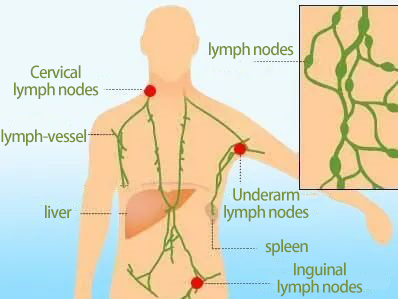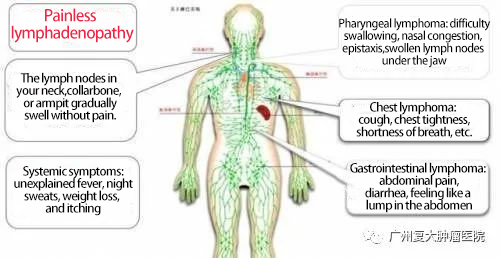Lymphoma is a malignant tumor originating from lymphoid tissue. It is also referred to as "lymphoma" and is one of the top ten most common malignant tumors. The incidence rate has increased significantly in recent years as new case come up every 9 minutes in the world, and the incidence rate is 3.5 people/100,000 people. September 15th is "World Lymphoma Awareness Day". So, how to achieve early diagnosis and early treatment of lymphoma? How effective are the current treatments for lymphoma? Let’s find out.

At present, the pathogenesis of lymphoma is still unclear. However, it is generally believed to be the joint action of genetic factors and environmental factors. Virus or bacterial infection plays a certain role in the occurrence of lymphoma. For example, Epstein-Barr virus is related to Burkitt lymphoma, and Helicobacter pylori Associated with gastric mucosa-associated lymphoma. In addition, immune dysfunction and radiation exposure could also cause a high incidence of lymphoma.
01 What are the symptoms of lymphoma?
Painless lymphadenopathy is common symptom as most patients seek medical treatment after they found swollen lymph nodes on their bodies, commonly be seen in the neck, armpits, and groin areas and often accompanied by fever, weight loss, sweating, itchy skin, etc.

Lymphoma can occur anywhere of the body except hair. Swelling of lymph nodes in different positions can cause corresponding compression symptoms then cause pain, and compression of the superior vena cava can cause superior vena cava syndrome; compression of the trachea can cause symptoms such as cough, chest tightness, dyspnea, and cyanosis. Involvement of the gastrointestinal tract can cause abdominal pain, diarrhea, abdominal masses, and hematochezia, etc. Liver involvement may cause hepatomegaly, jaundice and other symptoms. Kidney involvement may cause hypertension, renal enlargement, renal insufficiency, and nephrotic syndrome, etc. Skin involvement may cause subcutaneous nodules, masses, infiltrative plaques, and ulcers, etc. These atypical symptoms could be easily misdiagnosed or missed. Therefore, regular physical examination is the key to screening for lymphoma. Once painless and persistent lymphadenopathy is found, you should seek medical treatment in time.
02 Who are at high risk for lymphoma?
✍High -risk groups——
Those experienced radioactive exposure or exposure to radioactive dust;
Patients with infection and chronic inflammation;
Those with low immune function, autoimmune diseases or history of organ transplantation.
✍Prevention suggestions——
Avoid radiation exposure and radioactive dust as much as possible;
Pay attention to weather change, prevent infections and avoid bacteria and viruses lurking in the body;
Develop healthy lifestyle, do more physical exercise, and improve immunity and disease resistance;
Let go bad emotions and maintain a good mood;
Treat autoimmune diseases or chronic inflammation;
High-risk groups should undergo regular physical examinations every year to achieve early detection, early diagnosis and early standardized treatment.
03 Treatment of Lymphoma
Don’t panic if you’re diagnosis with lymphoma, active treatment is the key! Among many cancers, lymphoma is one of the "curable tumors" defined by the World Health Organization, and even about 50% of late-stage patients can be cured through chemotherapy. The pathological types of lymphoma are complex and heterogeneous, and their treatment principles is different. Guangzhou Fuda Cancer Hospital currently uses a variety of methods to treat lymphoma. No matter which method is used, our hospital will take into account the patient's age, clinical stage, pathological type, etc. to formulate an individualized treatment plan.
Therefore, lymphoma is not as scary as imagined. As long as it can be detected early and actively cooperate with doctors, patients with lymphoma can be scientifically, standardizedly and clearly diagnosed and classified to formulate treatment plans. At the same time, if patients could maintain a good attitude, the condition may be controlled to a large extent.